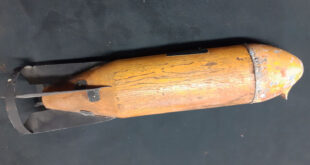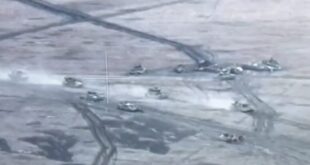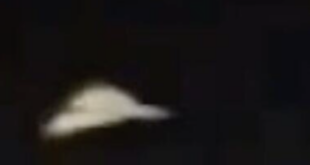GUTSY AIR FORCE COMBAT CONTROLLERS SAVE THE DAY
By Lt. Col. Robert K. Brown
From the August 2015 issue of SOF
NIGHT CHOPPER INSERTION IGNITES LIFE AND DEATH BATTLE
On the night of 27 September 2014, three Air Force Combat Controllers, 18 U.S. Special Forces troopers and 60 Afghan commandos choppered in to a terrorist base located in a small village in Helmand Province, Afghanistan, long known as a hot bed of Taliban operations. In September, the Taliban had kicked off a campaign to retake the area from U.S. and allied forces.

The team had rehearsed for days before launching their mission. Intelligence had repeatedly briefed the team that the Taliban in the AO were no junior varsity. They were well trained, well led, unafraid of allied air support and more than willing to die in place.
One controller was nearly scratched from the mission when the group’s base had been hit with a barrage of RPG rounds during an attack on 21 September. Air Force Technical Sergeant Matthew Greiner was hit with rocket shrapnel in the leg but continued to call in airstrikes as he was worked on by a medic while holding a map with holes in it.
He was choppered to Kandahar Air Field for treatment and then to Bagram Air Field. When he requested permission to return to his unit, the medicos said, “But you have holes in your leg.” Greiner, determined to accompany the mission he had essentially planned, replied, “Show me what you want me to do. I’ll do whatever you want, Greiner told Air Force Times.” So they said, ‘Go run a mile and a half.’ I hobbled but I made it. ‘They said, ‘You’re good.’” Greiner went on to say that he planned the mission and did not want to hand it off to someone else.
Their mission was clear cut: disrupt terrorist operations, as well as locate and destroy drug and weapons caches.
The assault group was split into two elements. Senior Airman Dustin R. Temple’s team consisted of four Green Berets and five Afghan commandos who took up positions to the southeast of the target village. The second element included 50 Afghan commandos and 13 Green Berets who moved to the southwest of the village.
Within minutes of disembarking, Temple’s unit came under withering fire from what an Air Force release described as “heavy machine-gun, rocket-propelled grenades and small-arms fire” from a large group of at least 100 insurgents. Temple called in air support from F-16s, AH-1s, AC-130 and a MQ-1 Predator drone.

TRAINING TAKES OVER
“It was unlike anything I could have ever imagined…unlike anything you can prepare yourself for,” said Temple. “It all came back to training for me at that point. I remember thinking back to those days in training that were really tough, and now I realize they were preparing me for something like this.”
Instincts and training took over for the combat controllers and Green Berets. When Sergeant First Class Andrew Weathers, the ODA team medic, took a round to the head from a Taliban sniper, Temple helped to drag him to safety. Senior Airman Temple would become an AFSOC legend with what he did in the moments after Weathers was shot.
According to his Air Force Cross citation, Temple put himself directly in the line of fire and, with the assistance of Staff Sergeant Hollis Webb, dragged Weathers from a rooftop. They radioed for a MEDEVAC chopper for him; when it arrived, Temple would again go into the line of fire – this time helping Webb and an EOD tech move Weathers across a football field’s worth of open ground. Within an hour of being hit, Sergeant First Class Weathers had been MEDEVAC’ed. The fighting still remained intense.

ROUNDS HIT INCHES FROM HIS HEAD
The second element came under fire at about the same time, with a round hitting six inches from Goodman’s head. He stayed on his rooftop to repel an insurgent assault within 40 meters of his position. Goodman called AH-64 attack helicopters to fire on the closest threats, while coordinating aerial strikes on mortar positions.
Goodman “maintained a steady flow of fires through a choreographed alternation of aerial strikes and mortar fire, subduing the enemy attack for hours,” according to the award citation. “At one point, Goodman drew the enemy out by instructing the loud, low-flying AC-130 to remain outside of audible range. When the enemy initiated a massive attack, Goodman controlled both aerial fires from the AC-130 and mortar fires from friendly ground forces until they retreated.”
In the same element, Greiner was able to use an MQ-1’s sensors to locate groups of insurgents moving through the village, and used A-10 and AH-64s to eliminate six before they could get in position. He destroyed a massive weapons cache and, during the night, used multiple aircraft to take out radio networks while braving enemy fire to locate enemy and friendly positions. While two observation posts were almost overrun, Greiner “focused all efforts on halting the enemy advance,” according to his citation.
He called in four 500-pound bombs from two F-16s to destroy compounds with enemy machine gun positions and other strong points. When the insurgents called to capture Americans and advanced, Greiner directed three danger-close strikes with three Hellfire missiles and multiple strafing runs from AH-64s.
At the end of the battle, Greiner was responsible for eliminating 21 insurgents, and called in nine danger-close strikes. Goodman controlled 28 attack helicopters and 20 fixed wing aircraft for 26 engagements, six at danger close, 45 times with mortars, resulting in seven insurgents killed. He also destroyed five buildings, 14 vehicles and nine fighting positions.
Temple controlled aircraft for 26 engagements, including 75 danger-close strikes. His actions resulted in 10 insurgents killed, another eight estimated killed and more than 80 friendly forces saved.
In all, there were 80 airstrikes, eliminating 38 confirmed insurgents, with another eight estimated killed. They destroyed 28 vehicles, 17 buildings and 32 fighting positions.

RUNNING OUT OF AMMO
After 45 hours, the coalition troops began running short of ammo. A re-supply chopper braving enemy fire brought in the vital ammo, but also a replacement for the gravely wounded SFC Weathers. Temple, along with Staff Sergeants Kurtz and Webb, ignored heavy Taliban fire to retrieve as much ammo as they could carry. Calling in F-16s to deliver ordnance at “danger close” distances, Temple, Kurtz, and Webb once again braved intense fire to retrieve the remaining ammo and supplies.
 BLOWING AWAY SIX INSURGENT MOTORCYCLES
BLOWING AWAY SIX INSURGENT MOTORCYCLES
Shortly after that, a half-dozen insurgents roared toward the American position on motorcycles. An AC-130 gunship, called in by Greiner, vaporized that threat.
The Americans did not come out without losses. Sergeant First Class Andrew Weathers died of his wounds at Landstuhl Regional Medical Center in Germany. Senior Airman Dustin Temple was awarded the Air Force Cross for heroism, while Technical Sergeant Matthew J. Greiner and Senior Airman Goodie J. Goodman received the Silver Star. All three also received the Bronze Star for their tours, and Greiner received a second Bronze Star with Combat Distinguishing Device.
“These Airmen are much of the reason I am standing here today,” Capt. Lacenski, the Special Forces ODA commander, said. “They were faced with one of the most significant battles of Operation Enduring Freedom, in my opinion, and they acted professionally, valorously, flawlessly and executed the mission. I couldn’t ask for a better group of Airmen.”
 Soldier of Fortune Magazine The Journal of Professional Adventurers
Soldier of Fortune Magazine The Journal of Professional Adventurers





